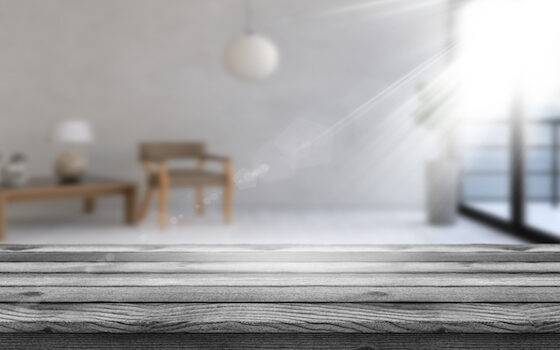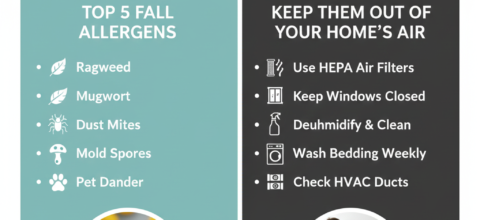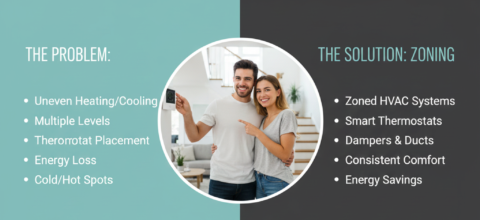3 Most Common Indoor Air Pollutants
Did you know that air pollution comes not only from factories and vehicles but from your house and office? And sometimes, air pollution in home is even more harmful than the outdoor one, because you are constantly under its influence. Is it worth mentioning these pollutants can cause various diseases or even be fatal? The World Health Organization (WHO) claims that 2.3 million deaths per year are caused by indoor pollution (2019-2021 study). It’s not as much as the impact of outdoor pollution (4.5 million), but it can cause much more damage to your health and cause chronic illnesses such as asthma, bacterial or fungal infections, cardiovascular diseases, cancer, and so on.
Why does it happen? The place where you live is supposed to be the safest spot on the planet. Imagine your house as a small factory that produces not one harmful chemical, but plenty: from carbon monoxide to pesticides. All this is getting into your lungs and then causing trouble. Let’s figure out what the most important indoor air pollutants are and how you can protect yourself.
Knowing and fighting indoor air pollutants
The Environmental Protection Agency claims that indoor air pollution is one of the first five air quality issues in the U.S. What are those most common indoor air pollutants that are already in your home and why should you be afraid of them? The air in the average American house consist:
- dust mites – microscopic creatures which live in dust and cause allergies in every room. It’s impossible to notice them and even harder to reduce their population;
- pet dander – flakes of dead skin cells from your beloved cat, dog, rabbit, iguana, or any other animal with skin or fur. If you don’t have pets, then you still have dander because according to some studies, you’re an animal too. The flakes from your skin and hair can also contribute to making your air polluted and cause severe allergies or breathing problems. Not everyone is so sensitive to those triggers, but if you do, you better go see your doctor;
- carbon dioxide (CO2) – if you have a stove, an oven, or want to get through the winter by using a fireplace, it is possible that you breathe in the gas every day without even noticing it. You can’t just get poisoned by cooking a pie (if all the precautions are taken), but the longer you’re exposed to the gas with no regulation, the worse you will feel. If you don’t take safety measures, you will quickly experience headaches, nausea, confusion, vomiting, and chest pain. If you have any of those symptoms – go to the emergency room immediately, because the next step after those symptoms is death;
- carbon monoxide (CO) – can be extracted from fires and appliances which work on gas, coal, wood, or oil. Like CO2 it doesn’t have any smell or taste, and it kills pretty quickly. The gas replaces erythrocytes (red blood cells) with itself. The CO does it pretty quickly for you to fall unconscious or not be able to call the ambulance, before that you will also experience weakness, confusion, lack of breath, dizziness, headaches, muscle pain, and feeling sick in general. If you have appliances that burn such substances, you put yourself at risk. So, if any symptoms occur – rush to the emergency room or call 911, turn off the approximate CO-making device, open all the doors, windows and go outside;
- tobacco smoke – if you or people who live under the same roof smoke, it can cause trouble. Cigarette smoke contains 90% of gas and 10% of particles, such as tar, cyanide, heavy metals, etc. The worst thing about it is that if you’ve smoked once in the kitchen, the air pollutant particles stay there for a much longer time, even after the smell evaporates. It can cause breathing problems both for active and passive smokers. We can’t say if vape smoke can do the same harm as tobacco because they haven’t been studied yet, but for your own sake, try to smoke anything outside the house ;
- mildew- fungus and mold of different kinds which grows in your bathroom or kitchen. Basically, if the area has perfect humidity (more than 50%), mildew starts to multiply, releasing spores and causing air pollution. It may be harmless to a lot of people, but, first of all, mildew is a great place for bacteria and viruses to start their colonies. Second of all, gross. No one wants to be neighbors with little mushrooms and green fields of mold, they smell and can quickly reproduce. One day you wake up and mildew is already on your ceiling, laundry, and food. If you have been experiencing difficulty breathing, asthma attacks, rush, runny and stuffy nose, it’s time for action;
- herbicides and pesticides – what is good for your food, is not necessarily good for you. You may be harmed by inhaling them or consuming them with food and water. Herbicides and pesticides are made of chemicals that already sound threatening, such as triazines, urea, glyphosate, and so on. Depending on the time of exposure, these chemicals may cause blood poisoning, reproductive issues, birth defects, cancer, neurological and immune diseases;
There are other pollutants that can occasionally show up in your house, such as paint, solvents, and asbestos, and all of them release harmful toxins too. But if you can fight those by wearing a respirator and providing good ventilation during home repair, how to get rid of other home pollution?
Indoor air pollution solutions
Air pollution and asthma go hand in hand along with other diseases, which is why you should always think about the air you breathe in. Proper ventilation is a life-saver. Whether you have CO, CO2, or any type of home pollution, fresh air from the outside, especially if filtered, can reduce the build-up of toxins and chemicals. Green alternatives to cleaners are a good start to make the impact of chemical cleaners less visible. Wash dishes with baking soda and ground mustard, white vinegar and citrus fruit juice can serve multiple purposes, from whitening to surface disinfection. Install air purifiers in your room, they tend to fight dust, pollen, and dander. Buy some home plants, they release additional oxygen and consume harmful gasses. These are the simple things to make you breathe easier.
A little cleanup doesn’t hurt, especially if you have air pollution in your house and already experience some health issues. You can take a pill, but there is no guarantee that the symptoms will go away. You will have to keep your house clean and tidy, without allowing it to grow mold spores, let in insects, keep unsupervised ovens, heaters and smoke in the house. Clean your rooms at least once a week, use green alternatives to usual cleaners, ventilate frequently and you will quickly see the difference.










